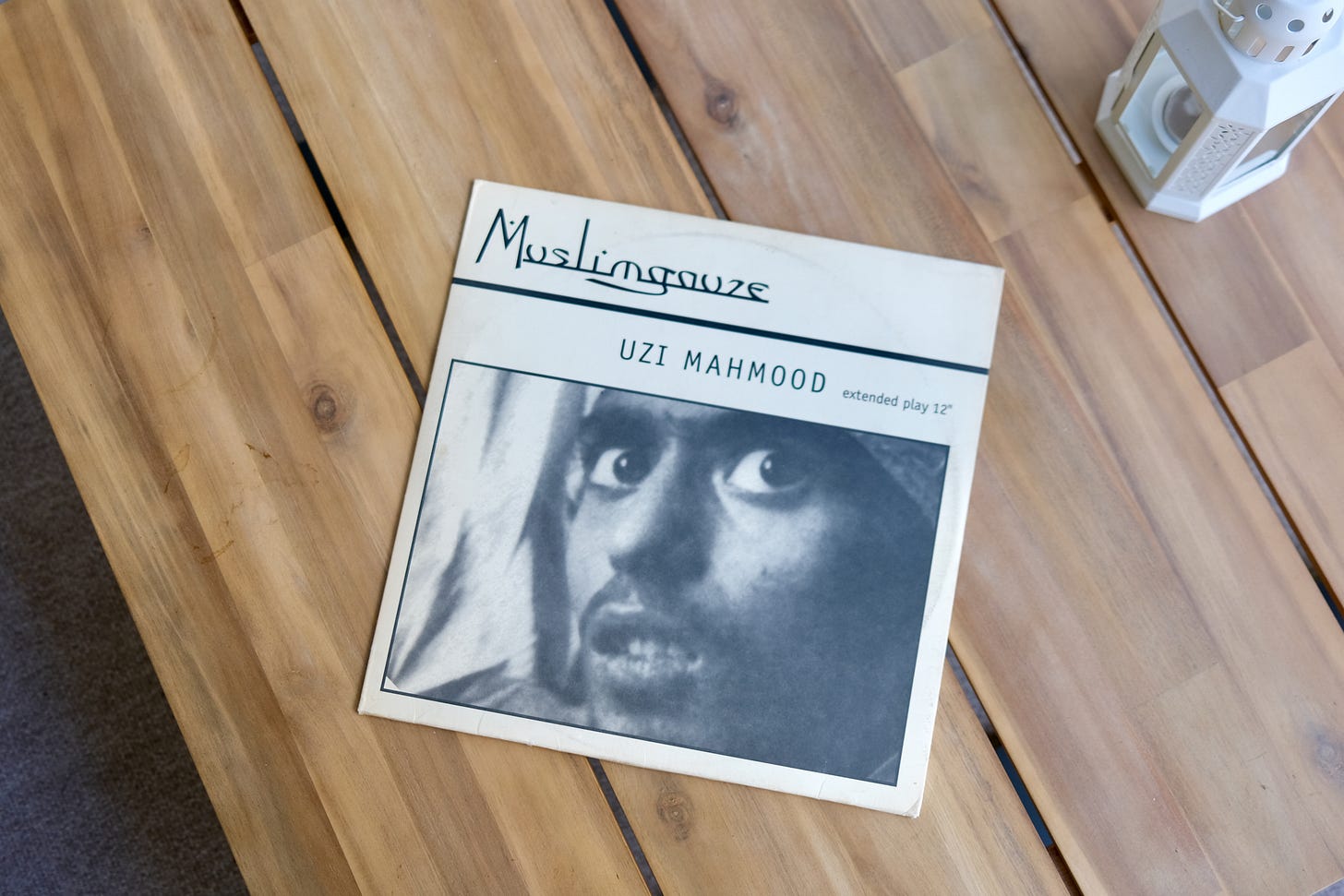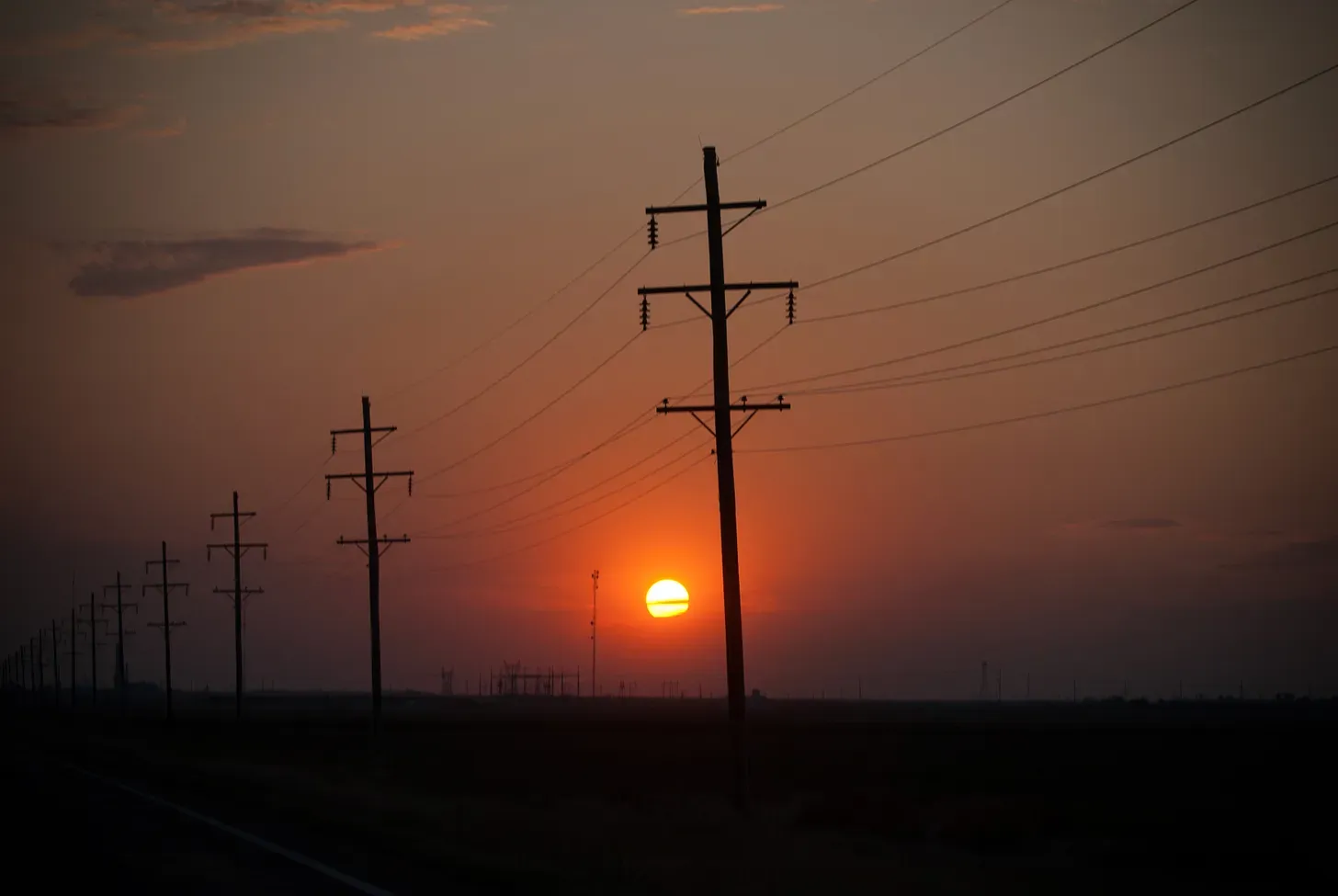Organizing my mp3 library is my preferred form of procrastination. Instead of reading the news, I make sure each song is accurately labeled and every album has the correct artwork. It’s a soothing antidote to the buckshot lunacy of the algorithm. The other day I noticed I have 2,362 songs by Muslimgauze. At first, I thought this must be an error, but no, I’ve somehow collected 189 Muslimgauze albums over the past twenty years, and new records continue to appear each month, which is prolific for someone who died in 1999.
I heard my first Muslimgauze record in 1998 while deejaying the midnight hour at WCBN in Ann Arbor, Michigan. Rooting through the new releases one night, I found an album called Uzi Mahmood with a grainy image of a man’s face on the sleeve. The camera caught him looking at something off to the left, and he looked haunted, maybe afraid. There was no other information, but the hyper-saturated drums and clipped Arabic vocals permanently rearranged my sense of music. I imagined this record as an answer to the faceless mythos of groups like Underground Resistance, Drexciya, and Basic Channel.
Years passed before I learned that Muslimgauze was the moniker of a white guy named Bryn Jones, who lived in a Manchester suburb. After reading about Israel’s invasion of Lebanon, Jones created the Muslimgauze alias in 1982 and devoted the remainder of his life to making albums with names like The Rape of Palestine, Vote Hezbollah, and United States of Islam—a move that, from today’s vantage point, feels like strip-mining another culture’s trauma for experimental music. The singer and producer Lafawndah offers a different point of view: “It would be superficial to say that Bryn’s art would be more legitimate if he’d spent time there—that perspective has turned contemporary art into a failed state of a different kind.” Perhaps both viewpoints can coexist, but my sense is his frantic output points to something heavier and weirder that will forever remain beyond understanding.
Noting the “inconceivably deep sadness” that haunts Jones’s music, the critic Ian Penman finds it hard to believe this melancholy came from a region he never knew firsthand. “The sadness seems much deeper and further ingrained than that, approaching pathological—almost as if the terrible dispossessed ‘birthright’ of the Palestinians corresponded, secretly, to some personal scar or shadow in Jones’s own life.”
Although he was invited, Jones never visited Palestine. He hardly left his parents’ home. He was thirty-seven years old when he died. Twenty-five years later, the records keep coming.
At least 215 Muslimgauze releases are circulating today: that’s at least an album per month during his seventeen-year career. He claimed he recorded a new album every week. Record labels could not keep up. Stop, they told him. We have too much. After he died, his parents told his label to take what they wanted. “I declined,” said Geert-Jan Hobijn, who runs Staalplaat. “Then they said they would put the rest in the dumpster, so I took as many masters as I could.”
I’ve been thinking about this image all summer: all that music stuffed into trash bags.

Jones remains a black box. Some say he had no interest in politics or religion. Others think he was a zealot. Now only the music remains. For such an elusive figure, his music is profoundly present. He was a talented drummer whose production skills edged toward the otherworldly. His drums beat against your brain stem, hammering out rhythms that cast a freaky shadow across everyone else’s narrow turf of industrial, hip-hop, drone, techno, electro, and dub. The field recordings and radio broadcasts that pepper his songs are astonishing when you check the date: 1987, 1991, 1995. Where was he finding this material before the internet?
“There are no lyrics because that would be preaching,” Jones said in a rare interview. “It’s music. It’s up to you to find out more. You can listen to only the music, or you can preoccupy yourself more with it.” But how do you reckon with such an overwhelming catalog? My music widget says I have over 291 hours of Muslimgauze in my library—nearly 13 solid days.
And so the artist’s obsession becomes the listener’s obsession.
It’s a worthwhile journey. If you’re new to Muslimgauze, here’s a short playlist I’ve put together of my favorite tracks. Start with thirty seconds: “Jagannath, Jagannath Who?” from Jaab Ab Dullah. Then track down “Uzi Mahmood 7,” a fistful of razor-blade drums, crackle, and dub. These are the building blocks of the Muslimgauze universe. Next, give the moody heat shimmer of Mullah Said and Sandtrafikar a shot. (Artists like Vatican Shadow have made entire careers out of attempting to reproduce these two records.) See also “Veil of Tear Gas” and “A Small Intricate Box Which Contains Old Blue Opium Marzipan.” Or consider Ryoji Ikeda’s Remix #6, a blitz of vision-blurring drums that reduces every other breakbeat to ashes. The remixes are where things get most interesting. Artists around the world continue to remix Muslimgauze, and, in the process, they are rewiring, reclaiming, and broadening Jones's single-minded vision.
Jones’s fanatical output haunts me because his reasons remain unintelligible. An album every week. I try to imagine the rhythm of his daily life. His relationship with his parents. Those trash bags. His devotion has produced a body of work that continues to regenerate beyond the grave. New Muslimgauze albums and remixes will probably keep surfacing long after we’re all dead, and it’s a beautiful thought: a feedback loop of remixes from every continent until there’s just one great big endless drum.





